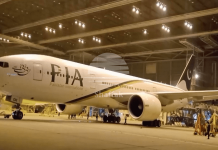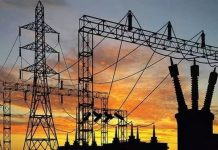ISLAMABAD: As a country of over 220 million people, Pakistan offers a very favourable location in South Asia in terms of political, economic, and strategic aspects. This is because it offers a high level of regional connectivity through its economic corridors, and has the potential to develop into a regional economic powerhouse.
Economic corridors stimulate economic activity within and between countries by providing modern transportation and trade infrastructure, facilities, and policies to promote economic development.
In terms of modern transportation, a senior official from the Pakistan Railways told WealthPK, “Upon completion of refurbishment and modernization of Main Line-1 (ML-1), the Pakistan Railways will not only enhance passenger traffic, but also revamp freight operations in the country and across the region”.
ML-1 is considered an economic backbone of Pakistan, as it rolls through around 75 percent of the country and over 80 percent of industries. It is highly significant in fostering the country’s economic growth and can develop into a regional economic hub, he said.
According to Central Asia Regional Economic Cooperation (CAREC), in the current difficult global economic environment, the member countries will need to further strengthen regional cooperation and integration efforts. Investment in railway assets and implementation of related soft measures to enhance trade will be critical factors in making railways attractive for shippers and transport operators. Enhancing railway connectivity, promoting trade and investment across borders, and improving access to external markets will help improve the economic prospects of the subregion as a whole.
Tuaha Adil, a research economist at the Policy Research Institute of Market Economy, informed WealthPK that in order to realize Pakistan’s full potential, more is needed to be done to foster economic stability and sustained growth. Furthermore, to attract foreign and local investment, the government must work on trade infrastructure and provide incentives to domestic and foreign investors, Tuaha added.
The government should reform the tax policies to ensure maximum investment because countries with difficult or cumbersome tax policies have suffered to attain the economic goals, he said.
According to a recent Asian Development Bank publication, Pakistan’s sustainable growth can be supported by the development of economic corridors.
According to the report, structural reforms are essential to unleashing the country’s economic growth, including rationalizing regulations and taxes for businesses as well as improving trade facilitation and logistics.
Last but not the least, WealthPK research found that if Pakistan increases and diversifies its exports to include higher-value products in demand around the world, it will be well-equipped to become a major player in international trade.
Exports of ready-made garments are already high, but the country needs to adapt to the changing global fashion trends and upgrade technology in order to resolve production bottlenecks. Furthermore, to grow the sporting goods sector, the country will require significant investments in technology, compliance certifications, engineering innovations, and sustainable joint ventures.
In terms of agriculture, skills development and training are essential for addressing the sector’s labour shortage. In addition, the sector needs to invest in research and development in order to deliver diverse and more sophisticated outcomes. Through skills and development, farmers must be enlightened with the latest technologies such as precision farming and artificial intelligence to boost the yield of the crops.





